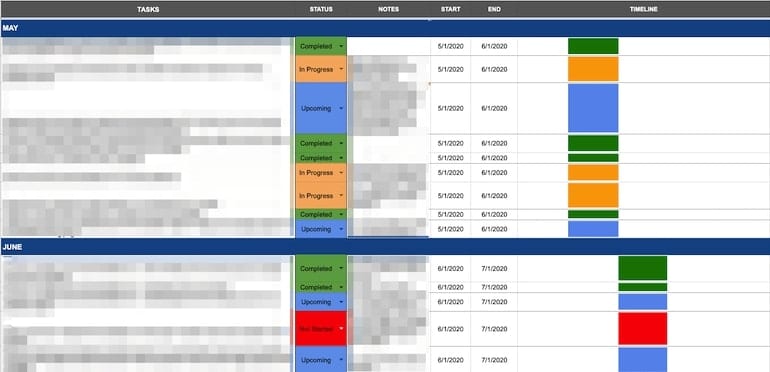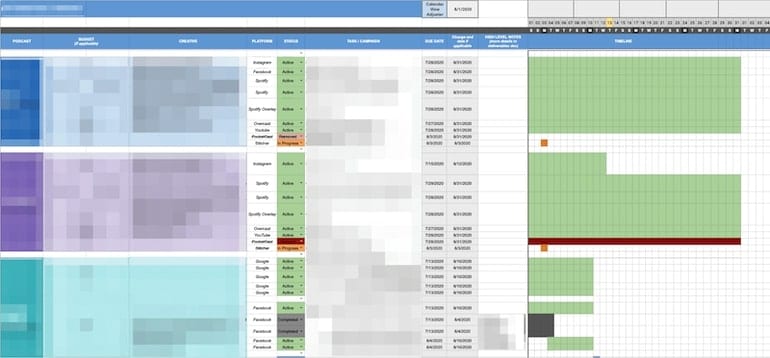We all know organization is a necessary skill when managing campaigns across different channels with various objectives, but do you have an efficient system in place? If you’re new to digital marketing, here are 6 quick organizational tips to follow.
If you’re looking for how to keep yourself and your team organized despite a multitude of deadlines, below is a list of tools I use to ensure myself and my team understand the following:
- When and what projects need to be completed
- The timeline and flight dates of various campaigns
- Making the time to complete these projects
1. Work Management Systems
There are different types of systems available, however, what you really need is a central place you or your team can keep track of all the upcoming projects. Ideally, everyone should have access to make changes in order to update statuses and add notes.
When using these systems, they shouldn’t be treated as simple to-do lists, but areas where you can keep track of changes, results, and communication. Any time a task is created, it should be immediately assigned to someone with a detailed explanation of what needs to be done, any necessary background information, and a clear DUE DATE. It will help you in the long run to have details on these tasks! Have you ever needed to go back at the end of the year to recap performance and have to re-analyze data because you couldn’t find your analysis summary? Work smarter, not harder!
2. Gantt Charts
Many of the work management systems have some sort of way to keep track of campaign flights but what if it’s just you or these systems don’t have the features you need? We internally use Gantt charts for strategy road maps, but you can also use them to keep track of when campaigns have overlapping launch dates.
Google Sheets has a great template you can use or doing a quick Google search brings up some great templates. Here’s an example of a Gantt chart I use to keep track of the status of monthly initiatives and upcoming strategy for one of my accounts. Color coding the status has helped me quickly point out what immediately needs attention and what I should bring up on my next call with my client.

The next Gantt chart is used to keep track of campaigns that run on different platforms, have different products, and objectives that run at the same time. I know it looks crazy but keeping track of due dates helps us understand which tasks are a priority and accordingly plan our week to ensure we’re meeting deadlines.

3. Calendar Blocking and Color-coding
Your calendar isn’t just to keep track of meetings, you can also use it to block out time to work on projects AND to make sure no one plans a meeting during these times. I (surprise surprise) color-code my calendar to match my clients or projects to properly plan out my week ahead of time and to know what I can move around or what needs to stay in place.
4. Negotiation!
You can be the most organized person, but you only have a limited number of hours during the week to accomplish tasks. Trying to fit additional projects in a time-constrained week will only mess up your timelines and add to your stress. Don’t be afraid to negotiate deadlines and set boundaries with your team or client. This is especially important now that most of us are working from home. There appears to be a blurred line of what one considers office hours, I’ve seen emails come in at odd hours of the night or during the weekend. If you have prior commitments, let them know and work with them to find a date that works for both of you.




